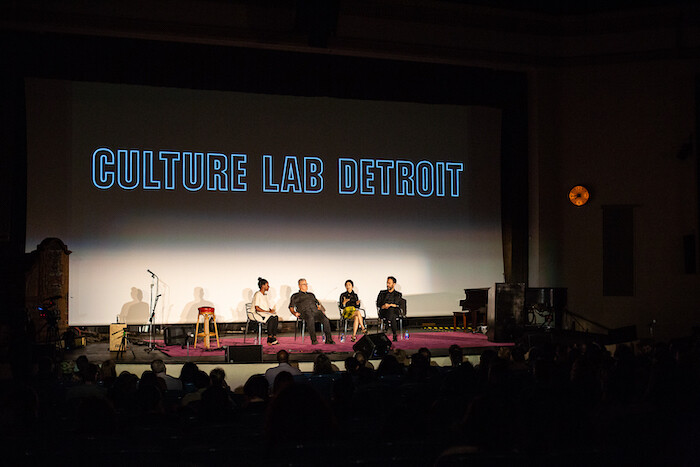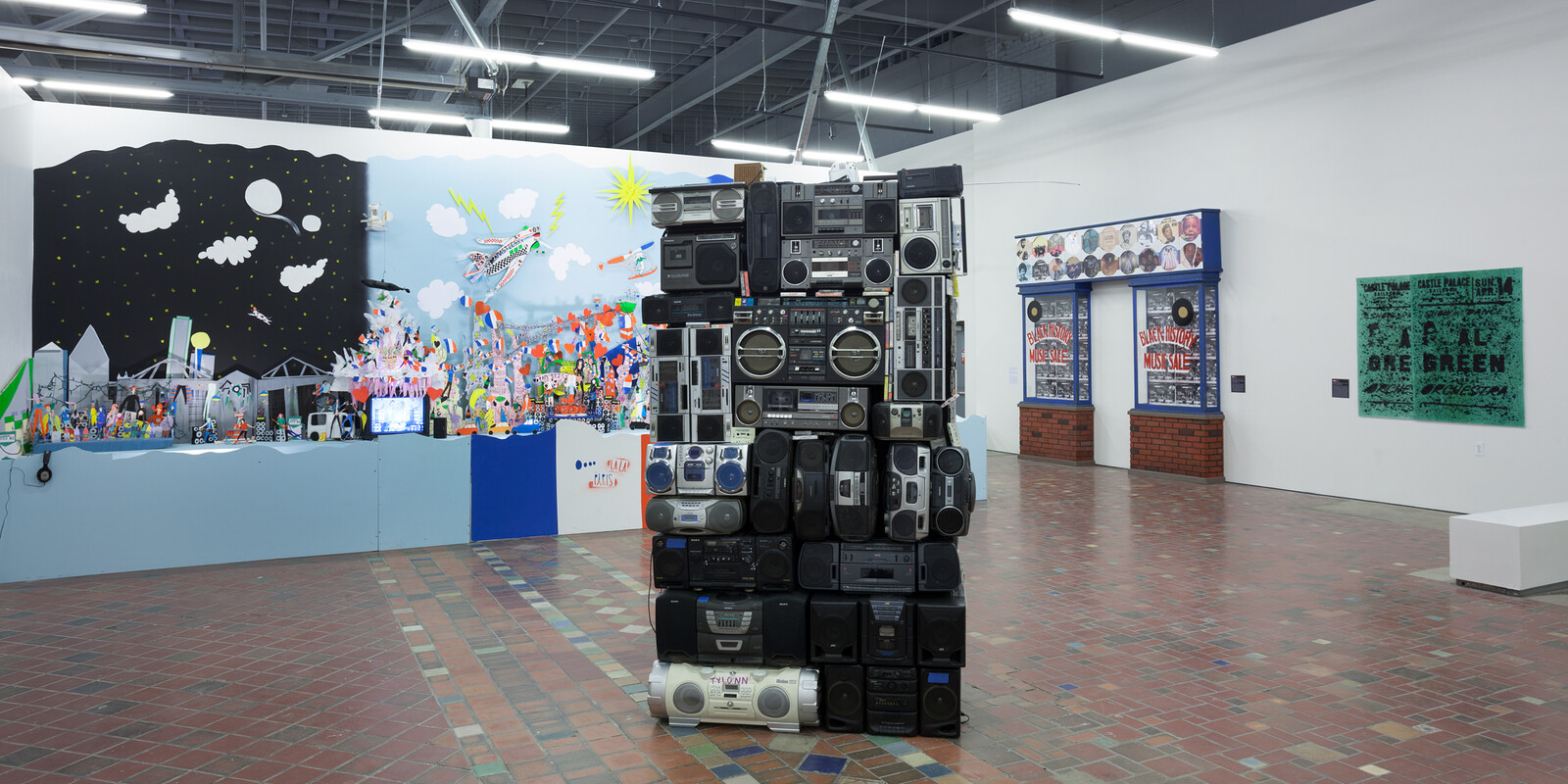Categories
Subjects
Authors
Artists
Venues
Locations
Calendar
Filter
Done
July 25, 2019 – Review
Nicolas Lobo’s "Wellness Center"
Rob Goyanes

Rather than the Belgian town of Spa, where, starting in the sixteenth century, the diseased and melancholic would drink chalybeate and engage in other watery therapies, I was in Detroit, sitting in SAUNA SHELF by Nicolas Lobo (all works 2019). The one-person octagonal sauna was encased in pink waterproof fabric, pulled taut and tie-dyed with black, marbled patterns. With deep breaths of the mist pumping in, my lungs and dermis chemically merged with the Vicks VapoRub and cuttings from the red cedar tree in the yard out front. This was the first recommended step in Lobo’s exhibition “Wellness Center,” located in the final project completed by artist Mike Kelley before his apparent suicide. Mobile Homestead (2006–13) is a replica of Kelley’s childhood home, a ranch-style house in the Detroit suburb of Westland. The full-size replica, which stands next to the parking lot of the Museum of Contemporary Art Detroit, is used for community gatherings, AA meetings, and exhibitions unrelated to Kelley and his work. As I sat in Lobo’s sauna, an artwork within a larger artwork, listening to the hum of a nearby fridge, my senses of public and private, wellness and not-so-wellness, started webbing together.
Half an hour later, …
November 20, 2018 – Feature
Detroit Roundup
Rob Goyanes

In early October, I went to Detroit for the first time. I was invited on a press trip by Culture Lab Detroit. Positioning itself as a socially conscious arts organization, its annual conference hosts discussions at different sites throughout the city. This year’s summit was dubbed “The Crisis of Beauty,” which to me sounded like a hollow if catchy turn of phrase. While waiting for my Lyft at the airport, a huge Ford truck approached with a bright blue LED Uber sign in the windshield. The driver was a large white man wearing a camo Trump hat. It portended a weekend of strange, overlapping contradictions regarding the future of Detroit, the political fungibility of what is deemed beautiful, and who finds beauty where—especially within the industrial ruins of Midwestern American cities.
Much contemporary art operates on an axis of crisis capitalism, with the promise of revitalizing downtrodden places. The name Culture Lab is a bit sus, considering that Detroit has been revolutionizing culture for a long time. The first panel, “The Aesthetics of Tomorrow,” was held at the Senate Theater, in Southwest Detroit. With a burning-red marquis and rectangular art deco flourishes, the building is an old silent film theater from …
January 5, 2018 – Review
“Sonic Rebellion: Music As Resistance”
Seth Kim-Cohen

“Sonic Rebellion” at the Museum of Contemporary Art Detroit offers two substantial proposals. First, it posits that the music of Detroit, ca. 1965–2000, was an active participant in the contemporaneous political and social struggles of the city, voicing and, in some cases, enacting resistance to the existing power structure. Second, it suggests that this conception of music and/as politics issues a call to the future, soliciting responses from contemporary artists including the well-known (Glenn Ligon, Juliana Huxtable, Cauleen Smith) and the somewhat lesser-known (Diamond Stingily, Ben Hall, Sterling Toles).
One leaves MOCAD feeling that the exhibition’s curator Jens Hoffmann is being deliberately coy about its theses. “Sonic Rebellion” presents historical artifacts and contemporary works, but not much context or information that would allow the spectator to engage with the show’s proposals. If, in fact, music participates in resistance, does it do so equally and by the same means, regardless of era, maker, genre, or issue? And what, precisely, is the relation of the historical artifacts in the exhibition to the contemporary artistic responses? Do the latter pay homage, revise, or amplify the positions and meanings of the former? The exhibition sidesteps such thorny questions and their thornier implications by adopting a …
June 28, 2011 – Review
Michael E. Smith
Chris Sharp

Michael E. Smith’s first solo exhibition at this gallery is bit of a surprise. Known for his deployment of disfigured domestic and urban products, car manufacturing materials, and generally toxic plastics, the Detroit born-and-based artist has partially shed the intensely saturnine pall that normally hangs over his portentous arrangements for a somewhat brighter and more playful mood. However, to claim that playfulness is new to what he does might be misleading. Indeed, what’s not playful about grilling a plastic and rubber covered canvas? Or, say, saturating pieces of clothing in polyester resin and occasionally sawing them in half? And to say that the sense of doom that normally lurks within his disfigured objects has been entirely drained away from them, like blood, would be no less misleading.
For this exhibition, Smith has punctuated Detroit’s venerable Susanne Hilberry Gallery—which is actually not in Detroit, but a suburb thereof, Ferndale, less than a mile away from the city’s limits—with a selection of some sixteen odd sculptures, works on canvas, and a light intervention. But were you to walk into Hilberry’s sleek and airy space, you would most likely be impressed by its sense of sprawling emptiness. Aside from a sculptural intervention in the …